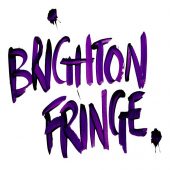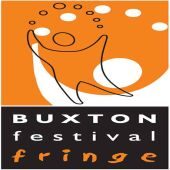Edinburgh Fringe 2023
The Oxford Gargoyles
The Oxford Gargoyles

Genre: A Cappella, Live Music
Venue: Gilded Balloon Patter Hoose
Festival: Edinburgh Fringe
Low Down
Oxford Gargoyles sing with polish, perfectly in sync and in tune, presenting the very best in jazz harmonies and song interpretation.
Review
University groups presenting a cappella at the Fringe generally choose a theme, which could be a movie style or pop style or even a mystery, and build a show around that idea. The goal is entertainment through unaccompanied singing, humour, staging, and lots of dancing. Some groups involve audience members with singalongs or by enticing one unsuspecting person onto the stage to participate in a routine.
Oxford Gargoyles don’t rely on any of that. They just sing, with polish, perfectly in sync and in tune. Yes, there is staging, but is not gratuitous. The goal is to present the very best in jazz harmonies and song interpretation. And they hit the mark on every piece of music. Their show is a thoroughly enjoyable hour of brilliant a cappella arrangements.
The Gargoyles are Oxford University’s jazz vocal ensemble. The group has a long history. Oxford’s only jazz vocal group, the Gargoyles were founded in 1998. They acquired a taste for travel after hosting the Harvard-Radcliffe Veritones on their tour of Europe in 2000. Since then the Gargoyles have shared stage with many university groups in the U.S. and U.K. plus standalone concerts in Hong Kong and Macau. In 2010 the group won The Voice Festival UK, beating all other UK student groups to the prize, this lead to the group being invited to the ICCA World Championship Finals at the Lincoln Centre in New York, an event that unfortunately had to be missed due to Oxford’s exam timetable (after all, they are students). In 2012 they were awarded ‘Open Category Winners’ of the U.K. Choir of the Year competition. They have recorded 11 albums and are Fringe veterans.
Like the Gargoyles, university groups often compete at the ICCA (International Championship of Collegiate A Cappella- think “Pitch Perfect”). I had the opportunity to interview one of those judges to find out what distinguishes a great performance from an average group. These qualities apply across the board for unaccompanied singing, whether it is for amateurs or pros.
First, sing in tune. Even if your audience members are not musicians, they will feel the unease of out-of-tune delivery. The Gargoyles are definitely “pitch perfect.” Every single member is a strong singer and completely holds their part, no matter the complexity of the arrangement.
Next, make the music interesting, whether that is from rhythmic variations, types of harmonies, shaping, or drama. Use the music to highlight and compliment the story. The Gargoyles channel Nina Simone with “My Baby Just Cares for Me,” in a gorgeous arrangement that brings that song to life. Many of the group’s songs use variations in rhythm and style within the arrangement to create interest. They change the ensemble size from all of the singers to small group presentations, creating variety. Several of the singers are accomplished at scat singing, wordless vocal improvisation where the singer often imitates the style of an instrument. In one piece, a member brilliantly replicates the sound of a trumpet using voice alone. They are clearly well-rehearsed, with every note and movement exactly in time and in its place.
Lock in the time. The rhythm is the heartbeat and energy of the song. It can emphasize key parts of the melody, create interesting moments in the song, and build drama and energy. The Gargoyles have perfected their timing, despite not using a vocal percussionist. Most impressive is their version of the The Real Group’s iconic “Chili Con Carne”, in which the Gargoyles have handily managed the complex salsa rhythms and stylings.
Use dynamics to evoke the mood of the piece. You need a wide range, used judiciously and appropriately. The Gargoyles not only employ a full dynamic range in the music, but, despite the fact they sing without microphones, you can clearly hear every word and note, whether it is nearly a whisper or is a full-out forte. Even when they face inward in a circle for effect, the music is very audible and the dynamic range is sustained. The arrangements build well, especially the finale “mash up” between “I Could Have Danced All Night” and “Let’s Face the Music and Dance”.
Staging should compliment the presentation not detract. The choreography should be in sync with the mood, style and message of the song. The Gargoyles have added more staging than in past years. It doesn’t detract and it does compliment the movement of the music and adds drama to the presentation.
Pay attention to the transitions in between pieces. Every movement and narration should be purposeful, which it is with the Gargoyles. There is very little talking, which is refreshing. The program smoothly moves from one song to the next.
Most of all, put your best foot forward. Don’t attempt an arrangement or song style that you can’t master. Do what you do best – and no more. The Gargoyles retain their focus on challenging but ear-pleasing jazz harmonies, adapted to pieces from the classic jazz repertoire like Caravan and Watermelon Man, to the Beatles, and even a dip into heavy metal.
And have fun. The audience knows if you are enjoying performing and if the group members are supportive of each other. These singers are clearly enjoying every moment on stage, and that radiates to the audience.
The Gargoyles are reminiscent of The Swingles and Gene Puerling’s The Singers Unlimited in their jazz arrangements and use of progressive chord voicings. That is one key element that separates the Gargoyles from most other uni groups.
As the members are the Gargoyles university students, the singers have changed over the years. What is consistent is the calibre of the singing and the jazz stylings. What is surprising, and impressive, is that most of the singers are not music majors. They are simply terrifically talented and dedicated performers with great instincts and excellent musicianship.
The singers are: Sopranos -Alaw Grug Evans and Steph Garrett; Mezzos – Hannah Blundell and Anna Vines; Altos – Ellie Stamp and Martha Wall; Tenors – Matt Pope and Luke Sitaraman; Baritones – Cormac Diamond and Ben Gilchrist; Basses – Sebastian Thomas, Andrew Hannaford, Maxim Fielder, and Jonathon Pratt.








































